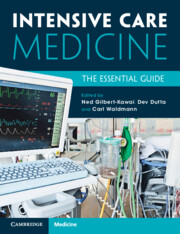Book contents
- Intensive Care Medicine
- Intensive Care Medicine
- Copyright page
- Dedication
- Dedication
- Epigraph
- Contents
- Contributors
- Preface
- Foreword
- Abbreviations
- Section 1 Resuscitation and Management of the Acutely Ill Patient
- Section 2 Diagnosis, Assessment, Investigation, Monitoring and Data Interpretation
- Domain 3 Disease Management: Recognition, Causes and Management
- Section 4 Therapeutic Interventions and Organ Support
- Domain 5 Practical Procedures
- Section 6 Perioperative Care
- Section 7 Comfort and Recovery
- Post-intensive Care Syndrome
- Prevention of Physical and Psychosocial Consequences Following Critical Care Admission
- Structured Rehabilitation Plans
- Long-Term Follow-Up
- Cost Implications
- Introduction
- Importance of Pain Management
- Pain Aetiology in the ICU
- Assessment of Pain in the ICU
- Management
- Procedural Pain
- Sedation
- Neuromuscular Blockade
- Assessment of ICU-AW
- Prevention and Rehabilitation of ICU-AW
- The ABCDEF Bundle
- Rehabilitation after Critical Illness
- Conclusion
- Introduction
- What is Meant by Recovery after Critical Illness?
- Models of Follow-Up Care
- Follow-Up Clinic Consultation
- Follow-Up Clinic Interventions
- Future Directions
- 7.1 How to Identify and Attempt to Minimise the Physical and Psychosocial Consequences of Critical Illness for Patients and Families?
- 7.2 Principles of Assessment, Prevention and Treatment of Pain in Intensive Care
- 7.3 Sedation and Neuromuscular Blockade in Intensive Care
- 7.4 Intensive Care Unit-Acquired Weakness and Physical Rehabilitation
- 7.5 Follow-Up after Critical Illness
- Section 8 End-of-Life Care
- Section 9 Paediatric Care
- Section 10 Transport
- Section 11 Professionalism, Patient Safety, Governance and Health Systems Management
- Index
- References
7.2 - Principles of Assessment, Prevention and Treatment of Pain in Intensive Care
from Section 7 - Comfort and Recovery
Published online by Cambridge University Press: 27 July 2023
- Intensive Care Medicine
- Intensive Care Medicine
- Copyright page
- Dedication
- Dedication
- Epigraph
- Contents
- Contributors
- Preface
- Foreword
- Abbreviations
- Section 1 Resuscitation and Management of the Acutely Ill Patient
- Section 2 Diagnosis, Assessment, Investigation, Monitoring and Data Interpretation
- Domain 3 Disease Management: Recognition, Causes and Management
- Section 4 Therapeutic Interventions and Organ Support
- Domain 5 Practical Procedures
- Section 6 Perioperative Care
- Section 7 Comfort and Recovery
- Post-intensive Care Syndrome
- Prevention of Physical and Psychosocial Consequences Following Critical Care Admission
- Structured Rehabilitation Plans
- Long-Term Follow-Up
- Cost Implications
- Introduction
- Importance of Pain Management
- Pain Aetiology in the ICU
- Assessment of Pain in the ICU
- Management
- Procedural Pain
- Sedation
- Neuromuscular Blockade
- Assessment of ICU-AW
- Prevention and Rehabilitation of ICU-AW
- The ABCDEF Bundle
- Rehabilitation after Critical Illness
- Conclusion
- Introduction
- What is Meant by Recovery after Critical Illness?
- Models of Follow-Up Care
- Follow-Up Clinic Consultation
- Follow-Up Clinic Interventions
- Future Directions
- 7.1 How to Identify and Attempt to Minimise the Physical and Psychosocial Consequences of Critical Illness for Patients and Families?
- 7.2 Principles of Assessment, Prevention and Treatment of Pain in Intensive Care
- 7.3 Sedation and Neuromuscular Blockade in Intensive Care
- 7.4 Intensive Care Unit-Acquired Weakness and Physical Rehabilitation
- 7.5 Follow-Up after Critical Illness
- Section 8 End-of-Life Care
- Section 9 Paediatric Care
- Section 10 Transport
- Section 11 Professionalism, Patient Safety, Governance and Health Systems Management
- Index
- References
Summary
Key Learning Points
1. Moderate to severe pain is common in ICU patients.
2. Assessment and management of pain can impact on psychological and physiological outcomes.
3. The American College of Critical Care published guidelines for the assessment and management of pain in the ICU.
4. Patients should be assessed regularly for pain using observational tools validated in the ICU environment.
5. Procedural pain should be considered for all interventions, even minor such as patient repositioning.
- Type
- Chapter
- Information
- Intensive Care MedicineThe Essential Guide, pp. 656 - 659Publisher: Cambridge University PressPrint publication year: 2021

